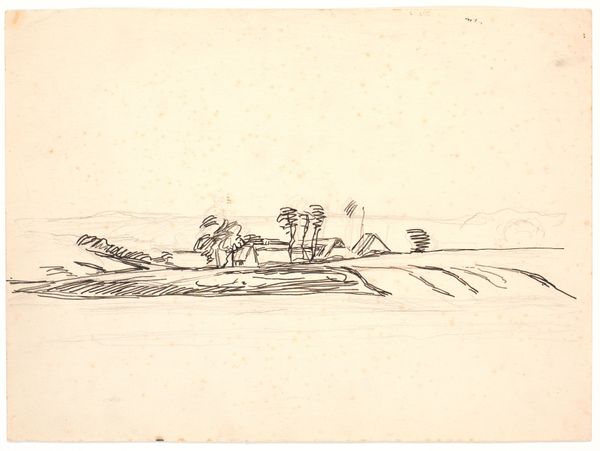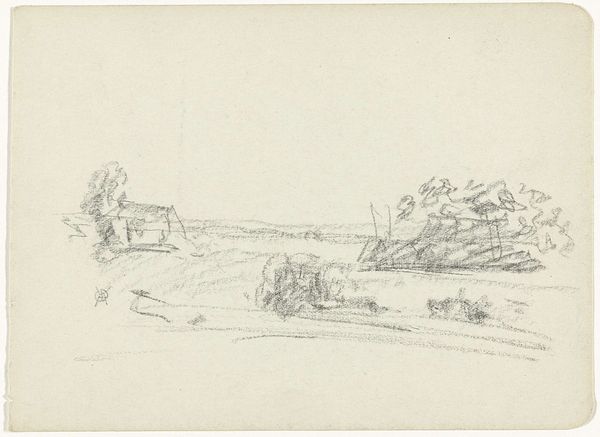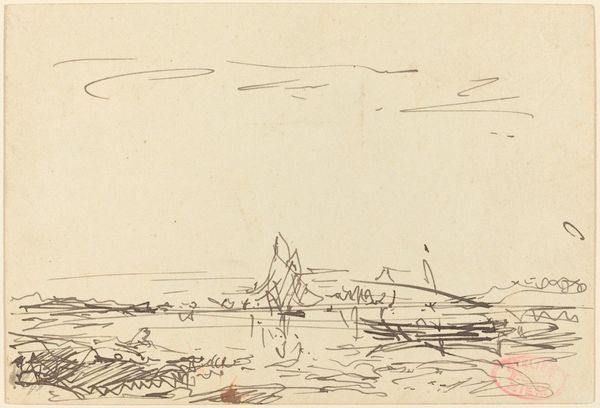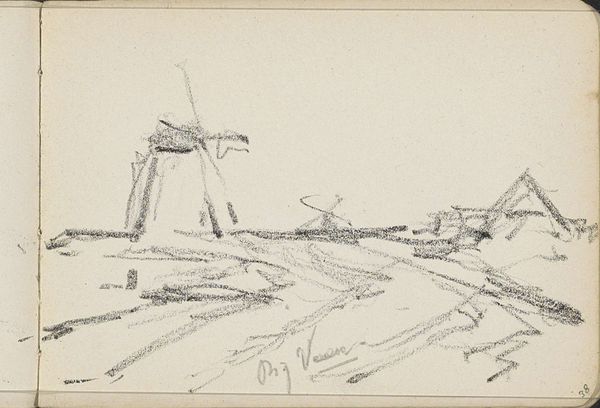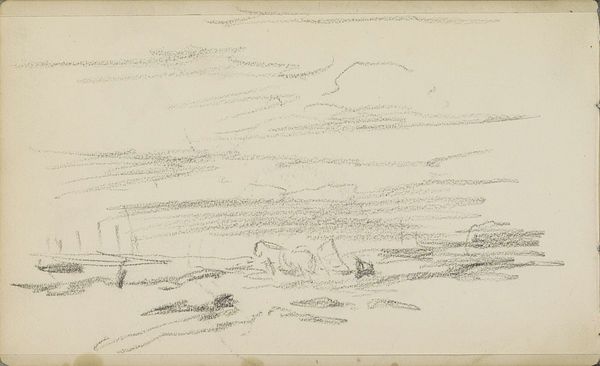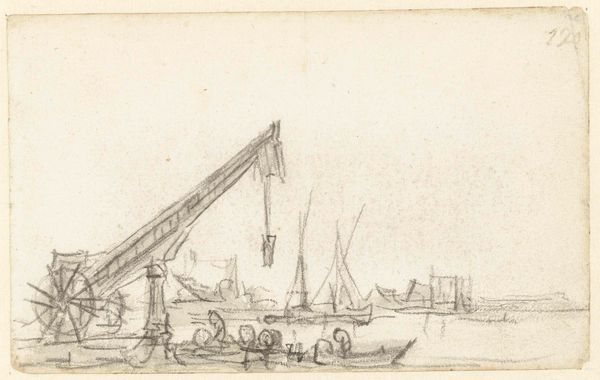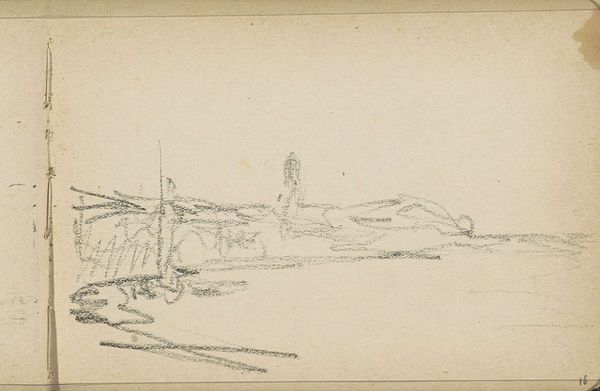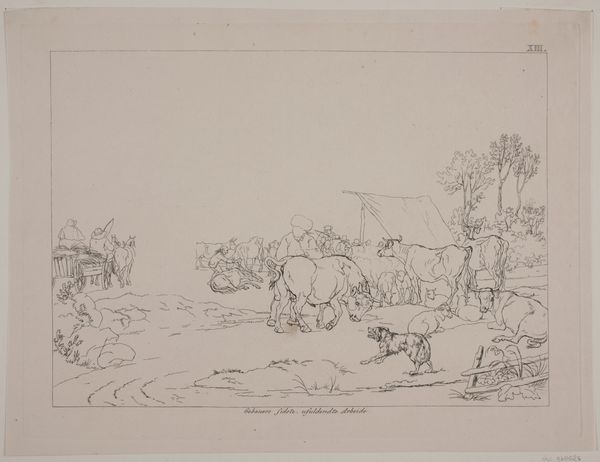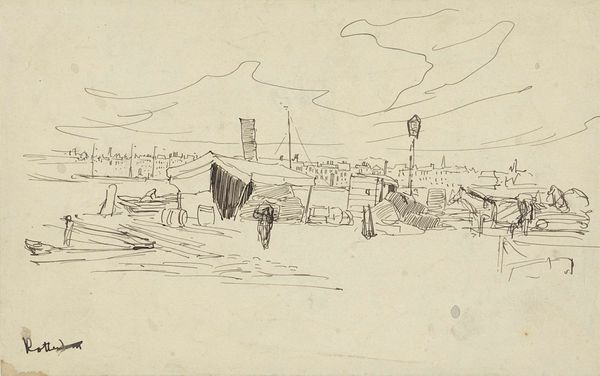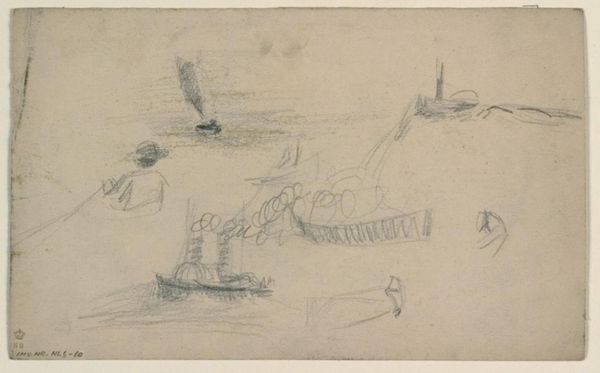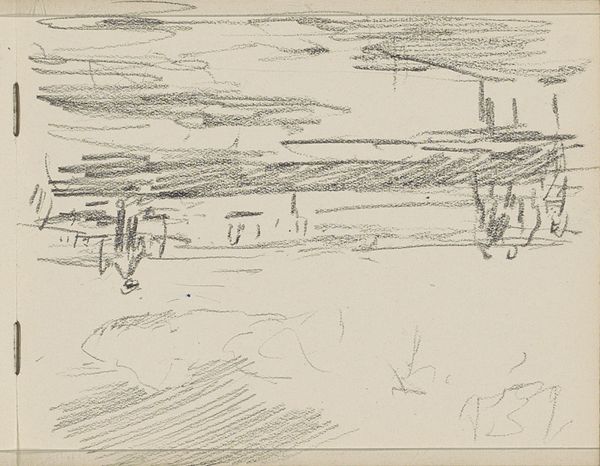
Copyright: Public Domain: Artvee
Curator: Looking at Charles-François Daubigny’s “Landscape in Holland,” executed between 1837 and 1878, I’m immediately struck by the sheer economy of line. It's a very subtle drawing, almost ghostly. What is your impression? Editor: The bareness in this work evokes the harsh agrarian realities of the era. The windmill and figures merge into a hazy background as if life is reduced to just the basic needs in the context of rapid industrial advancement. The landscape whispers about forgotten labor. Curator: I'd say it is Daubigny's sophisticated use of line, repetition, and composition that arrests me. Notice how the lines used to render the figures mimic each other to create compositional unity. Look at the density and the variety within the subtle strokes. The realism of this sketch captures form effectively, even in its sparseness. Editor: Precisely! Yet these bare necessities are deeply linked to systems of production and economic exploitation in the 19th century. The stark, repetitive motions remind us of the monotonous lives led by those tied to agricultural labour, whose existence depended on technology such as the mill. It reflects themes of class and industrialism. Curator: Interesting points! However, without getting too carried away with external context, I can say the pencil itself becomes an almost sculptural medium here. Its immediacy provides a window into Daubigny’s thought process. You can almost envision him outdoors, making swift judgements as to mass and spatial relationships. Editor: That's an important formal observation. But I also want to connect it to the broader landscape. Daubigny’s landscapes offer powerful insights into France and the rise of industrialization as they shifted socio-economic conditions in this area. Curator: An intellectual yet slightly distracting framework to apply. Ultimately, his skill, and even daring, should come before all that, shouldn’t it? Editor: To understand form in isolation seems self-limiting and somewhat dated. To interpret, for me, necessitates context and perspective. Curator: Well, that's given me much to contemplate about the relationship between intention and interpretation. Editor: Agreed, our different vantage points allow us to engage more thoughtfully.
Comments
No comments
Be the first to comment and join the conversation on the ultimate creative platform.

